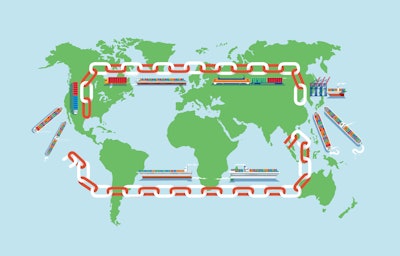
It’s hard to believe that we’re coming up on the 2-year anniversary of the Coronavirus disease (COVID-19). While it’s certainly not an anniversary worth celebrating, it is one worth researching.
Supply chain subject matter experts continue to write about the supply chain crisis, the labor shortage, supply chain risk and more. And, the common denominator between most of what these supply chain experts are saying is that the supply chain crisis is not over yet; companies will feel the repercussions for the remainder of 2022 heading into 2023.
The Ag Economy Barometer, for example, suggests that supply chain disruptions will continue to “haunt the nation’s agricultural sector,” with four of every 10 large-scale farmers and ranchers reporting difficulties in buying inputs ranging from fertilizer to farm equipment parts, according to the Purdue University survey. Farmers also expressed concern about rising production costs and the availability of production inputs.
Yet, December 2021 marked the second month in a row that farmers reported a stronger financial performance for their farms.
“Excellent crop yields [last] fall combined with strong crop prices provided many producers with their most positive cash flow in recent years. That combination helps explain the year-end rise in the financial index as well as the barometer overall,” says James Mintert, the barometer’s principal investigator and director of Purdue University’s Center for Commercial Agriculture.
However, according to the New York Federal Reserve, “the [Global Supply Chain Pressure Index] seems to suggest that global supply chain pressures, while still historically high, have peaked and might start to moderate somewhat going forward,” indicating that the supply chain crisis has reached its peak and may start to mend itself in the coming months.
“The measures of supply bottlenecks have risen dramatically during the recent recovery period, and this rise has been most notable for the ‘delivery time’ subcomponent of the [Purchase Manage Index] across our seven economies,” the blog post says. “First, we observe that the GSCPI jumps at the beginning of the pandemic period when China imposed lockdown measures. The index then fell briefly as world production started to get back online around the summer of 2020, before rising at a dramatic pace during the winter of 2020 (with COVID resurgent) and the subsequent recovery period. More recently, the GSCPI seems to suggest that global supply chain pressures, while still historically high, have peaked and might start to moderate somewhat going forward.”
Regardless of how you view the supply chain crisis and predict its impending end, what’s reality is that many parts of the supply chain will continue to feel the effects of COVID-19 for many months to come, especially as other supply chain disruptions unfold.



















